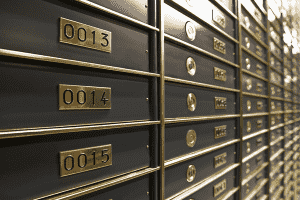
At Gold Investments, we understand the allure of real gold and the importance of ensuring its authenticity. Whether you’re a seasoned collector or new to the world of precious metals, knowing how to tell if gold is genuine is crucial. With a myriad of testing methods available, from the simple skin and float tests to the more definitive acid test, it can be a complex journey.
But fret not, we’re here to guide you through it. Ever wondered about the true nature of your gold piece? Stay tuned as we delve into the various ways to test gold, ensuring you make informed decisions. Have questions or need expert advice? Reach out to our friendly, knowledgeable team anytime.
Ways to Test Gold
Gold, a lustrous, precious metal, has captivated humanity for centuries, symbolising wealth, beauty, and permanence. Its rarity, combined with its resistance to tarnish and corrosion, underpins its immense value. In the realms of jewellery, investment, and technology, gold’s allure is unmatched.
However, this desirability makes it a target for counterfeiting, rendering the verification of gold’s authenticity paramount. Ensuring your gold is real safeguards your investment and upholds the timeless prestige associated with this noble metal. At Gold Investments, we’re committed to guiding you through the intricacies of real gold, empowering you to make confident, informed decisions in your gold ventures.
Below, we’ve outlined the many methods of testing gold, including:
- Size and Weight Test
- Float Test
- Nitric Acid Test
- Vinegar Test
- Machine Test
- And More
Size and Weight Test
The size and weight test is a classic yet effective method to assess a gold piece’s authenticity. Genuine gold has a specific density, making this test a reliable indicator. By meticulously measuring the dimensions and weighing the item, one can compare these figures to the known standards for gold.
This approach requires a delicate balance: too light, and it may not be pure gold; too heavy, and it could be a clever imitation. It’s a testament to the intricate dance between size and weight, guiding us towards the truth of gold’s purity. For personalised guidance or more intricate insights, our team is always at your disposal.
Skin Test
The skin test is a simple yet intriguing way to gauge gold’s authenticity. When you wear genuine gold jewellery, it should not tarnish or discolour your skin. If you notice a greenish or black mark on your skin after wearing a gold piece, it’s a red flag that the metal may not be pure gold.
This reaction typically occurs when base metals alloyed with the gold react with your skin or sweat, leading to discolouration. It’s a preliminary test, one of the many we discuss here at Gold Investments, to help you discern real gold from imposters.
Stamp Test: Look for Hallmarks
The stamp test, a cornerstone in assessing gold’s authenticity, involves scrutinising your gold piece for hallmarks. These tiny, often intricate stamps hold the key to understanding not just the genuineness but also the origin and quality of your gold. Found in discreet corners, these marks reveal the karat gold rating, indicating the metal’s purity.
But beware, savvy counterfeiters can mimic these too. That’s where our expertise at Gold Investments shines. With years of experience, we can help decipher these cryptic markings, ensuring what you hold is not just genuine, but also of the highest calibre.
Letter Markings Test
The letter markings test is a straightforward initial step in verifying gold’s authenticity. Typically, genuine gold items are stamped with hallmarks indicating their purity. These markings can reveal the karat number, often represented as “K” or “kt,” which signifies the gold’s fineness.
For instance, “18K” denotes 75% purity, reflecting 18 parts gold out of 24. Additionally, some pieces might bear the manufacturer’s mark or a hallmark that certifies the testing authority’s approval. While these imprints can offer valuable insights, it’s important to note that savvy counterfeiters might also mimic these marks, so further testing may be necessary to confirm an item’s true gold content.
The Magnet Test
The magnet test is a straightforward yet insightful method to assess the authenticity of gold. Genuine gold is non-magnetic, so if your item is drawn towards a magnet, it’s likely not pure gold. This test involves holding a strong magnet near the gold piece in question. If there’s no movement, you’re likely holding real gold.
However, it’s important to note that this method isn’t foolproof. Some non-gold metals used in counterfeit pieces are also non-magnetic, and gold alloys might contain magnetic metals. Therefore, while the magnet test can be a good initial indicator, it’s best used in conjunction with other testing methods to confirm gold’s authenticity.
Float Test
Next up, the float test is a simple yet intriguing method to check the authenticity of gold. This technique hinges on gold’s density, one of the heaviest metals. When you submerge genuine gold jewellery or coins in water, they should sink due to their significant density.
Conversely, objects made of fake gold or gold alloys, often lighter, may hover or descend slowly. While this test offers a preliminary insight into gold authenticity, it’s crucial to remember it’s not foolproof. Various factors, including the composition of gold alloys or the design of the jewellery, can influence the outcome. For definitive verification of whether your gold is real, further testing is recommended.
Ceramic Scratch Test
Another, more accurate method is the ceramic scratch test is a simple yet effective method to check gold authenticity, especially useful for items like jewellery, coins, or sovereigns. To perform this test, you need an unglazed ceramic plate. Gently scratch your gold object against the ceramic.
If it leaves a black streak, the metal is not real gold. However, a gold streak indicates you have genuine gold. This method is popular for its straightforwardness, but it’s crucial to proceed with caution to avoid damaging your precious metal. Remember, this test can help distinguish real gold from fake gold and gold alloys, providing a quick insight into the metal’s purity.
Acid Tests
Acid tests are a popular and reliable method for checking the authenticity of gold, especially when it comes to jewellery and rings. This technique involves applying a small drop of nitric acid to the gold in question. Genuine gold will show no reaction due to its resistance to corrosion and oxidation.
This test is crucial for anyone looking to buy gold, ensuring the piece’s real value. Conducting an acid test can provide peace of mind today for buyers and sellers alike, affirming the realness of the gold and safeguarding investments. Always approach this test with caution and consider professional assistance for accurate results.
Safety Tips for Using Acid to Test Gold
When it comes to determining if your gold jewellery or rings are the real deal, an acid test can be quite telling. However, it’s paramount to proceed with caution to ensure your safety and that of your precious items.
Here are essential tips to keep in mind:
- Wear Protective Gear: Always don protective gloves and eyewear to guard against accidental spills.
- Work in a Well-Ventilated Area: Acid fumes can be harmful; ensure adequate ventilation.
- Use Proper Tools: Employ a testing stone to avoid damaging your gold directly.
- Know the Acid: Different karats require specific acid solutions; ensure you’re using the correct one.
- Neutralise After Testing: Rinse the tested area with baking soda and water to neutralise any remaining acid.
Vinegar Test
The vinegar test is a straightforward yet effective method to check if gold is real, particularly useful for items like jewellery and rings. To perform this test, simply immerse the gold piece in white vinegar and observe the reaction. Genuine gold will remain unaffected, retaining its lustrous sheen, while non-gold metals will react, possibly changing colour or fizzing.
This method is a handy tool for anyone looking to buy gold today, offering a quick way to assess the authenticity of gold items. It’s a simple, at-home test that can provide peace of mind before making a purchase.
Lighter Test
The lighter test offers a straightforward approach to ascertain if your gold is real. This method involves holding a lighter flame close to the gold piece for approximately a minute. Genuine gold will get hot after prolonged exposure to heat but will not darken or change colour.
Conversely, if the item under test is made of fake gold or gold-plated materials, it will likely start to darken or show signs of discoloration. This test provides a quick and simple way to tell if gold is real, helping you determine the authenticity of your precious items with ease.
Machine Tests
Machine tests stand out as a sophisticated approach to discerning the authenticity of gold, offering a non-invasive yet highly accurate method. Utilising advanced technology, these machines evaluate the metal’s conductivity, which varies significantly between real gold and its counterfeit counterparts.
This method is particularly invaluable for intricate gold jewellery pieces, where traditional testing could be damaging. By measuring specific properties inherent to gold, the machine test provides a clear indication of purity, ensuring one can confidently ascertain whether their gold is real. This technology encapsulates the blend of tradition and innovation in the quest to verify gold’s authenticity.
Electronic Test
The electronic test offers a modern approach to ascertain if gold is real, blending technology with tradition in the quest for authenticity. This method involves using a handheld electronic device, which measures gold’s conductivity. Gold, being a highly conductive metal, will display specific readings on the device, enabling you to tell if the gold is real or not.
It’s particularly useful because it’s non-destructive and can be applied to various gold items, from jewellery to coins. However, it’s essential to ensure the device is calibrated correctly to avoid false readings, a critical step in confirming the realness of gold.
XRF Spectrometer
Lastly, the XRF spectrometer test stands as a pinnacle of technology in the quest to determine gold’s authenticity. This non-destructive technique offers a scientific approach to ascertain if gold is real, leveraging X-ray fluorescence to analyse the metal’s composition. By bombarding the gold piece with X-rays, the spectrometer detects the characteristic radiation emitted, thereby revealing the presence and purity of gold.
It’s a swift, accurate method that circumvents the need for invasive procedures, ensuring your treasured items remain intact while providing the assurance needed to tell if gold is real. This advanced technology has become a trusted ally in the verification of genuine gold.
Final Thoughts
In conclusion, determining how to tell if gold is real involves a blend of traditional and modern techniques, each offering its own level of reliability. From the initial visual inspection and simple skin test to the scientific precision of the acid test, each method plays a crucial role in authenticating gold.
Understanding these various tests provides a solid foundation for anyone looking to verify the authenticity of their gold items. It’s a fascinating journey into the world of precious metals, where knowledge and caution pave the way for true value recognition. Remember, the quest to tell if gold is real is as much an art as it is a science.
Get in Touch
So, if you’re venturing into the exquisite world of gold and silver coins and bars, we’re here to assist you every step of the way. Whether you have enquiries about starting your collection or need guidance on specific pieces, our expert team is ready to provide you with the personalised advice you deserve.
Feel free to give us a ring on 020 7283 7752 for an immediate chat, or if you prefer, drop us an email at [email protected] with your queries. For your convenience, our contact form is also available for any detailed questions or requests. We’re dedicated to ensuring your journey into precious metals is as informed and seamless as possible.

